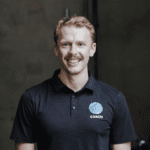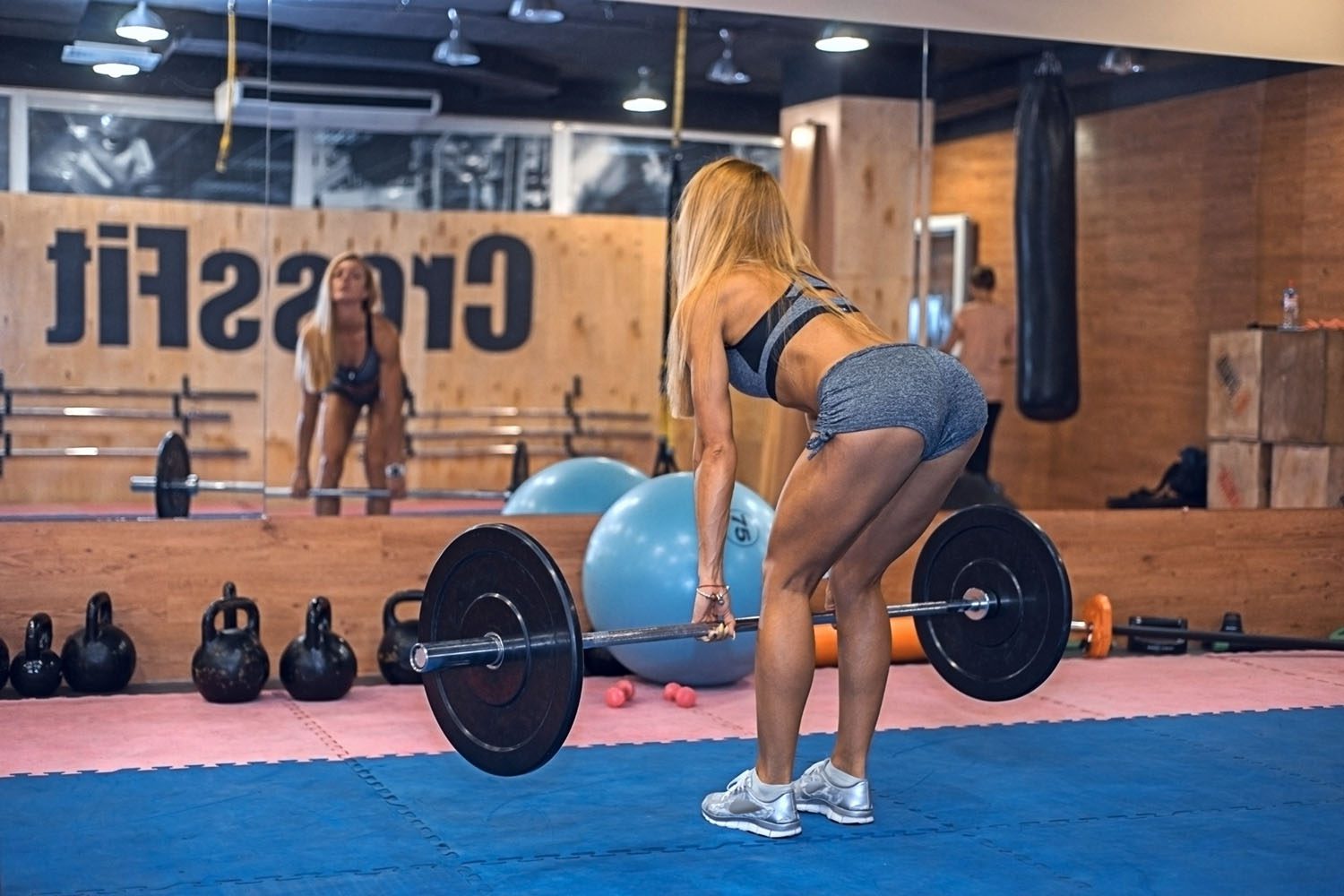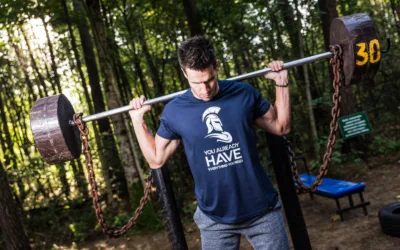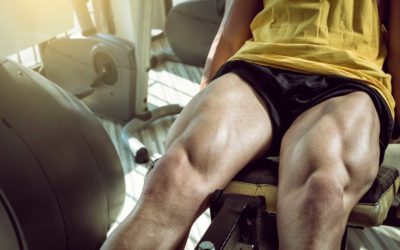A Guide to Romanian Deadlifts, King of Glute Exercises

Glute gains are one of the hottest subjects in fitness. Hip thrusts, banded squats, clamshells, monster walks — the assortment of glute exercises is all over the place these days. Want to simplify your glute training with just one dominant movement? RDLs are where it’s at.
Jakob De Coninck is founder of Synergy Strength in Victoria, Australia, where he runs a successful in-person and online coaching business. He seeks to raise the standard of the personal training industry by focusing on science-based, intelligent and intentional training style. In this blog he breaks down cues for the Romanian deadlift, plus variations and progressions.


jakob de coninck


Forget Hip Thrusts, RDLs Rule For Glute Strength
But you need to execute it correctly.
Why is Range of Motion Important?
When we want to grow a muscle, the amount of range we can go through with that muscle is the key to its growth. As is putting the muscle under load during both the concentric (the “up” phase of a lift) and eccentric phase (the “down”) of a lift. The deeper your range of motion through a movement (with control), the more stretching and “tearing” the muscle endures, which is what leads to hypertrophy.
The RDL combines the best of both worlds — you don’t rest the weight on the ground at the bottom of the lift, so your posterior chain is under constant tension for the entire set.
The hip thrust, on the other hand, uses a very small range of motion and it’s easy to forget to control the eccentric phase, so your glutes are technically working less.
How To Hinge For Perfect Romanian Deadlift Form
The reason most people botch the RDL is because they can’t hinge. We’ve all seen those videos of people rounding their backs, looking like the hunchback of Notre Dame. Another fault is squatting instead of hinging so they only feel their quads working.
There’s a simple and easy way to learn how to hinge. It starts by opening a door.
Yes, open a door to about 45 degrees, stand a foot away from it and turn so your back is to it, feet shoulder width apart. Without moving your feet, try to shut the door with your bum.
What do you notice? Your shins are vertical, your knees are only slightly bent, your chest dips forward and your hips move backward.
All of these positions are key for a quality RDL. Here’s a breakdown of cues for the RDL by body part.
Knees
When most people hinge, they squat down at the same time. Your knees should only bend slightly during an RDL — not fully locked, but also not bent like in a squat.
When you bend your knees too much, you take that vital tension out of your hamstrings and glutes. This tension is necessary to elicit a growth response. Your shins stay mostly vertical.
Hips
Your glutes move your hips. If your hips aren’t moving, your glutes aren’t growing. By pushing your hips backward in space you’re creating length and stretch in your glutes and hamstrings.
If your hips stop moving backwards and you feel like you’ve hit the end of your range of motion, come back up. It doesn’t matter if you’re only at mid-thigh, your flexibility might stop you there for today, but with time and practice it’ll improve. If you keep going down once your hips stop moving, something else is being loaded and 9 times out of 10 it’s your back. Hips keep moving backward.
Back
The RDL is NOT a back exercise. Your back needs to be in an isometric position throughout, meaning you lock it in and it does not change during the exercise.
I like to cue athletes to take a breath into your belly and hold. Brace your abs like you’re about to get punched by the biggest guy or girl at your gym. This will help lock your abs and protect your lower back. I suggest holding your breath or only exhaling as you stand up. Brace like you’re going to be punched in the stomach.
Lats
We want the bar to stay close to our legs. If the bar leaves your body, then your back will jump in and take over the exercise. Not what we want if we’re trying to build that booty.
So what I like to cue is to imagine you’re trying to break the bar over your legs, like you’re snapping a twig. This will cause you to externally rotate your shoulders (the front of your elbow will face forward) and in turn your lats will fire up to keep that bar tight to your body. Snap the bar like a twig.


Change the Way You Train
Romanian Deadlift Variations & Progressions
Use Straps to Load Up!
Hear me out: what do you think is stronger, your grip or your glutes/hamstrings? Glutes can take a whole heap more load when your grip can’t keep up, which means you don’t get to load your posterior chain to its maximum. Grab a pair of straps to take your grip limitations out of the question so you can pull more weight!
B-stance RDL
Training gets boring and we need variety! This is where the B-stance RDL comes into play. To drive growth we need to keep our output high, so unilateral work is useful. The B-stance is staggered, so you target the one glute more, but use the stability of the other leg to help.
To execute, everything is the same as the RDL, except you take one foot and move it back so the toe is in line with the heel of your other leg, some people like to imagine this like a kickstand for your bike. From here perform your RDL like normal, then swap legs and repeat.
Single Leg RDL
Time to get your balance in check. With this unilateral variation, we place all the load onto one glute. This is ideal for working on your balance and any asymmetry you might feel between left and right.
To complete this you can hold a dumbbell or kettlebell in the opposite hand to the leg you are working. Lift the other leg off the floor as you hinge forward like a regular RDL. Let that weight stay straight down to ‘replace’ the leg that is pushing backward and keep you balanced.
Be sure to give single leg landmine RDLs a try if you want a little more stabilization with all the same peach pump.
Start including more RDLs into your program and see the difference it can make on those booty gains. Hip Thrusts have a place, but I promise you RDL’s will change your glute training for the better.
Check out this blog for even more RDL knowledge bombs!
Romanian Deadlifts (RDLs): The Ultimate Hamstring Exercise for Posterior Chain Development
Want Training Tips, Exercise Guides & Knowledge Bombs Sent to Your Inbox?
Sign up for the FitNerd newsletter from TrainHeroic
Related articles
Slow Reps vs. Fast Reps
You’ve probably noticed that some people in the gym tend to perform their reps as fast as possible, whereas others take a slow and controlled approach. But which is better? Dr. Andy Galpin is a Professor of Kinesiology at the Center for Sport Performance at California...
How to Do Leg Extensions Without a Machine
Short shorts are the new stinger tanks. Rocking those big tree trunks with canyon deep cuts is so hot. Leg extensions are a bodybuilding staple—they isolate your quads, the front-facing muscle group of your thighs, by flexing (bending) and extending (straightening)...
Tried-and-True Methods to Fix Plantar Fasciitis
What is Plantar Fasciitis? If you’re new to running or returning to it after a break, you might have been blighted by plantar fasciitis, a fancy name for an annoyingly common foot problem. It’s when the band of tissue that connects your heel to your toes (the plantar...


Join the community
Sign up for the latest training news and updates from TrainHeroic


About TrainHeroic
Support
Made with love, sweat, protein isolate and hard work in Denver, CO
© 2022 TrainHeroic, Inc. All rights reserved.





